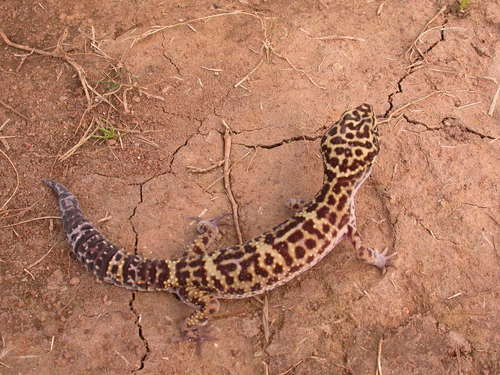
Leopard Gecko
The leopard gecko, Eublepharis macularius, captivates with its spotted skin and distinctive blinking ability. A resilient desert dweller, it plays a vital role in controlling insect populations. Observe its charming tail-waving, a unique defense mechanism, as it navigates its arid habitat with grace and adaptability.
8-15 years
Lifespan
50.0 - 80.0 g
Weight
Length: 18 - 28 cm
Size
Brown, Grey, Yellow, Black, White, Orange
Color
18-24 months
Age of Sexual Maturity
Least Concern
Conservation Status
Stable
Population Trend
Characteristics
Eublepharis macularius, commonly known as the leopard gecko, is a nocturnal lizard native to arid regions of Afghanistan, Pakistan, and India. Notable for its striking spotted pattern, it has a robust tail used for fat storage and exhibits unique behaviors like tail-waving and vocalization. Its eyelids, rare among geckos, allow it to blink.
Distribution Range of the Leopard Gecko
Eublepharis macularius, commonly known as the leopard gecko, is native to the arid and semi-arid regions of South Asia. Its geographical distribution includes parts of Afghanistan, Pakistan, India, Iran, and Nepal.
Leopard Gecko's Habitat
Environmental Conditions
Leopard geckos inhabit dry, rocky desert and grassland environments. These regions are characterized by sparse vegetation, warm temperatures during the day, and cooler temperatures at night. The climate is typically arid to semi-arid, with low humidity levels.
Ecological Niche
Leopard geckos are primarily ground-dwellers, often found in crevices and under rocks to escape the heat of the day. They are nocturnal and insectivorous, feeding on a variety of invertebrates. The species has adapted to its environment by developing a thick, fatty tail for energy storage and a camouflaged skin pattern to blend into the rocky terrain.
Copyright @ Nature Style Limited. All Rights Reserved.
 English
English